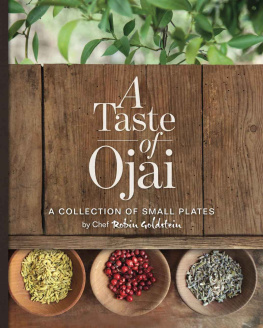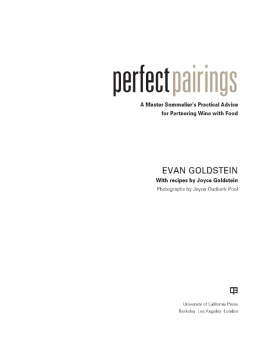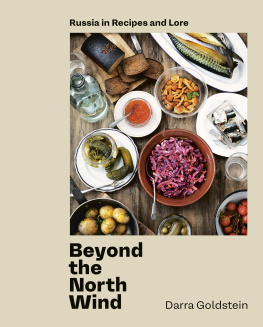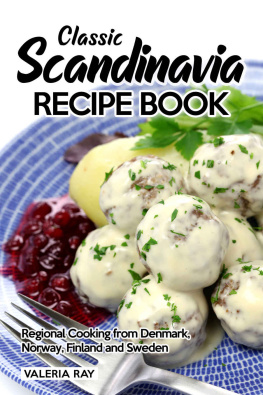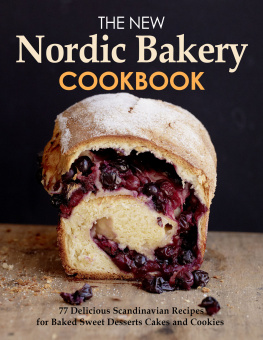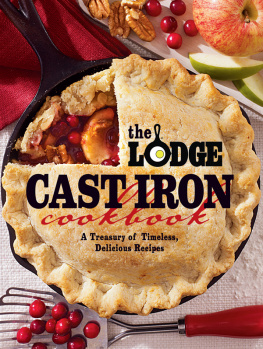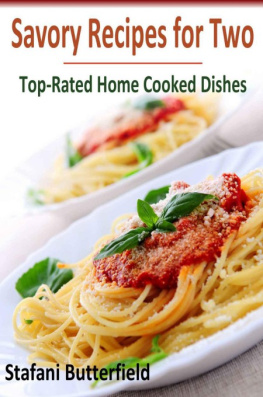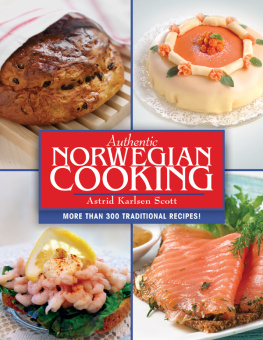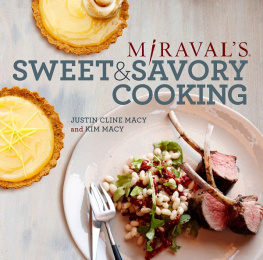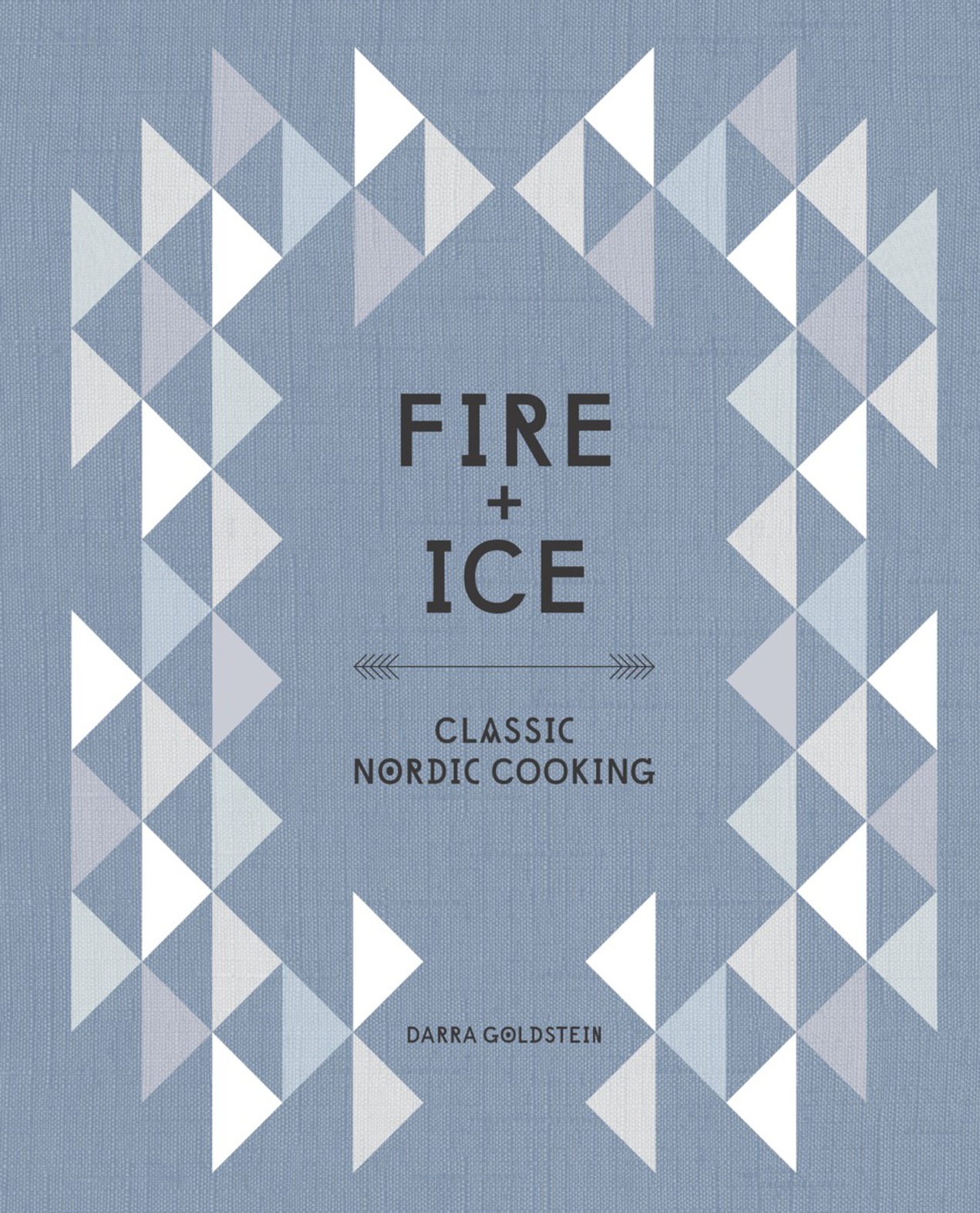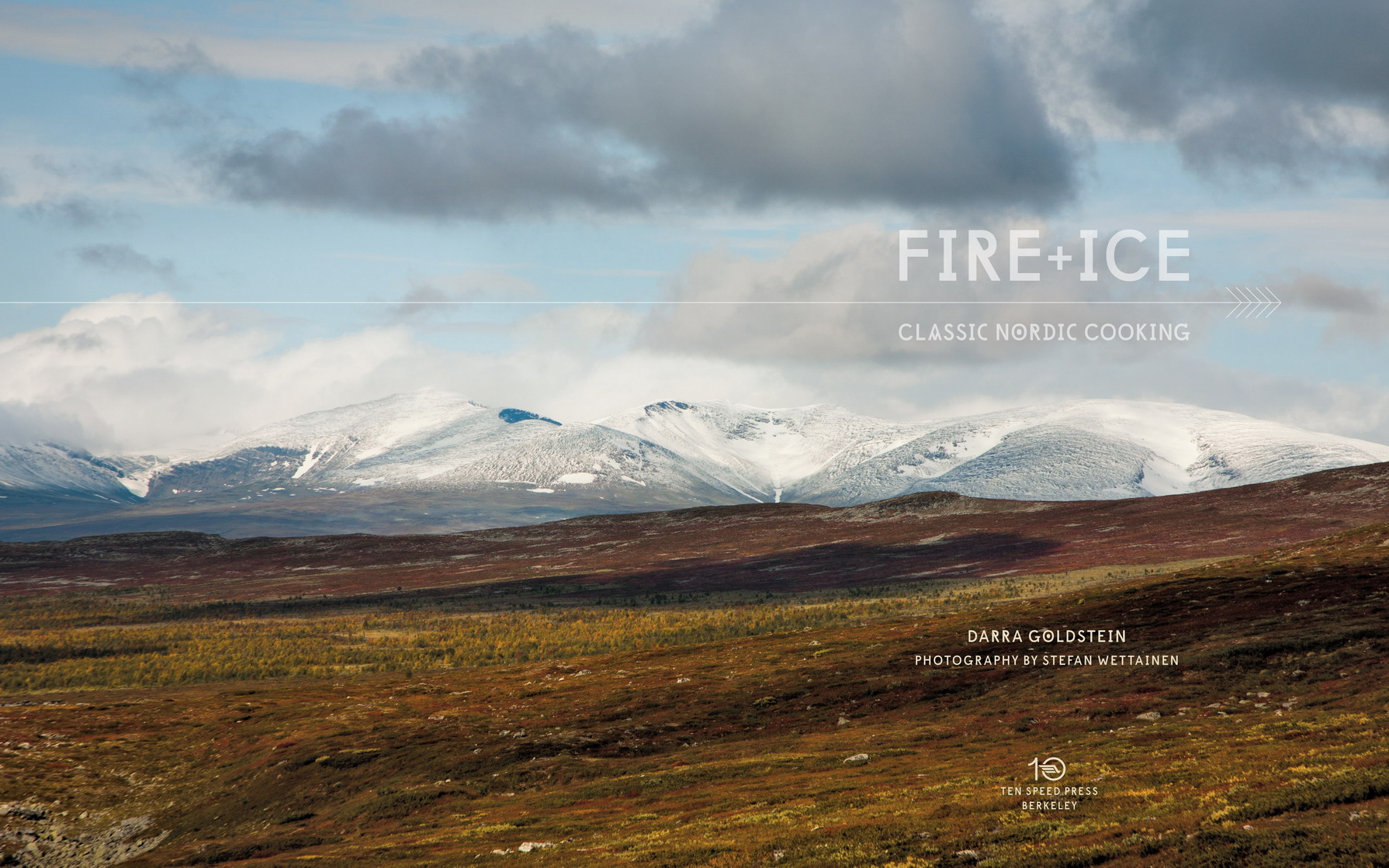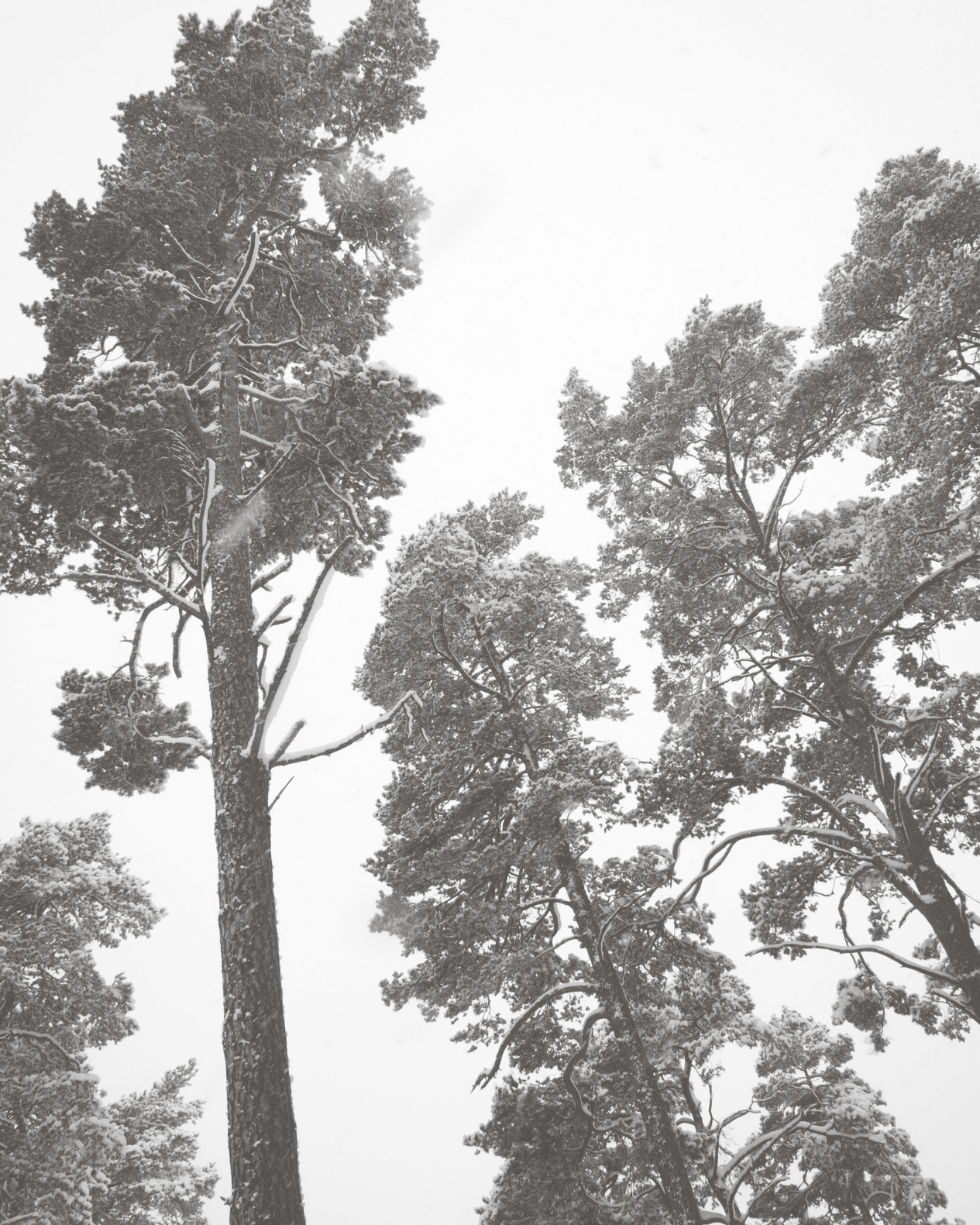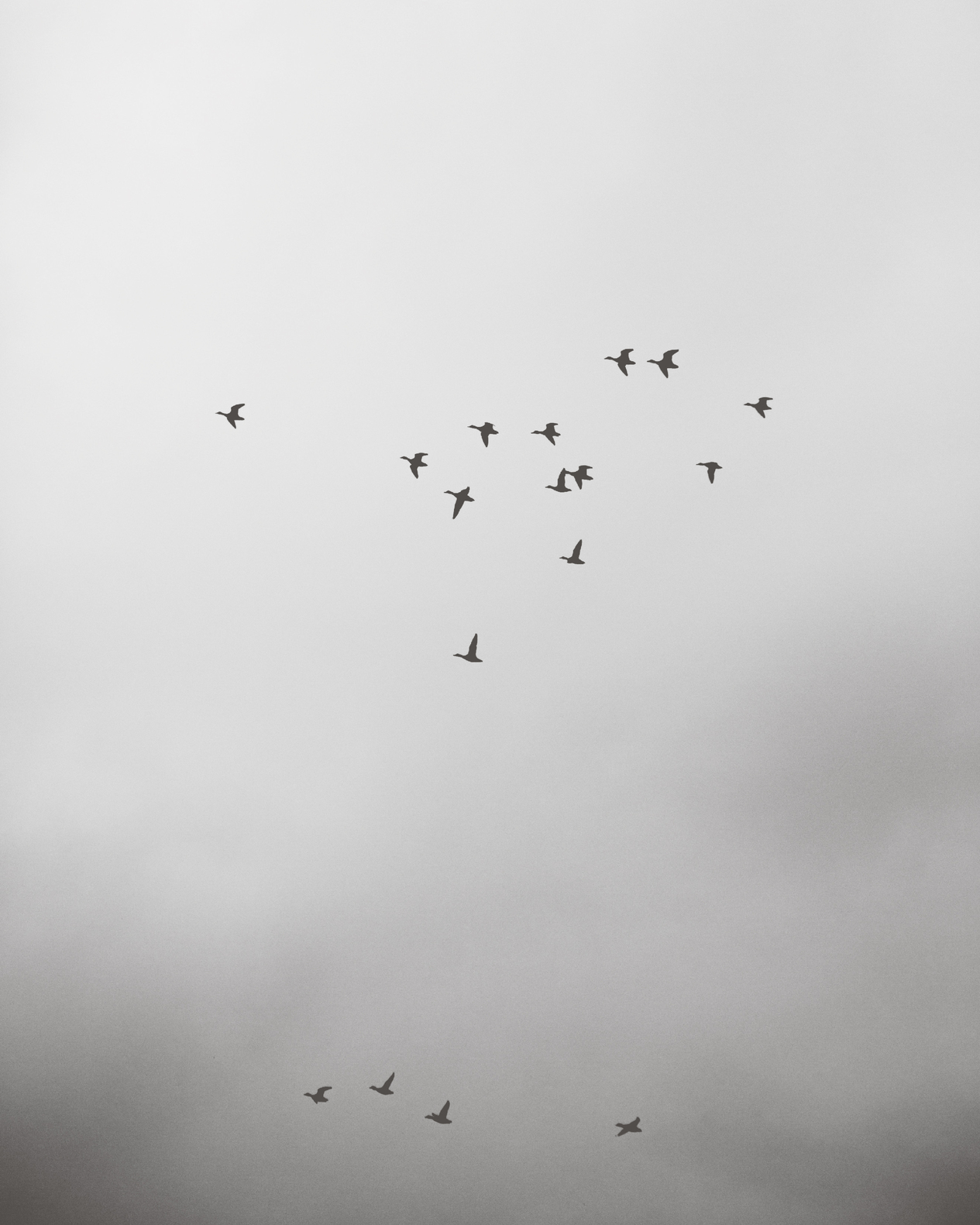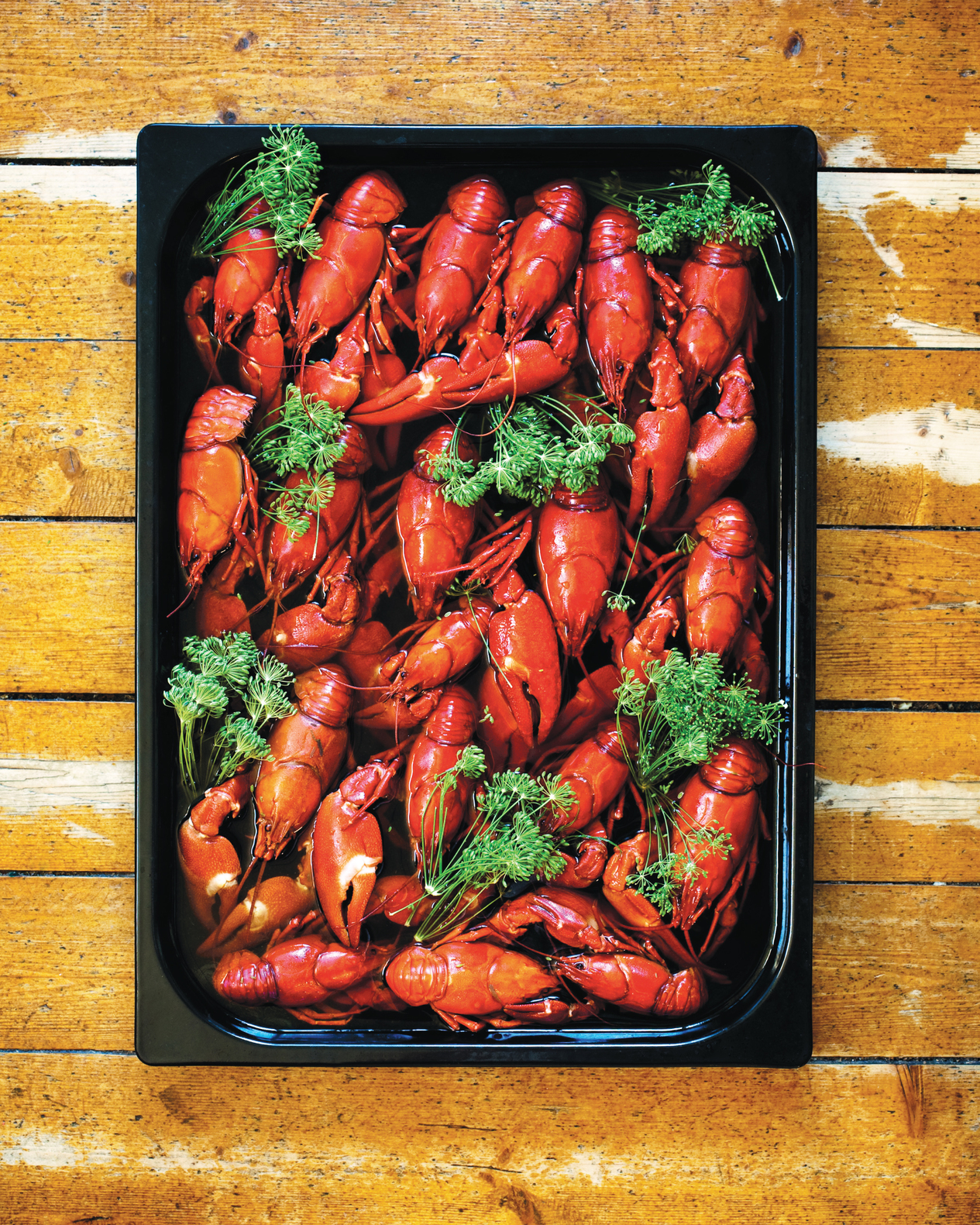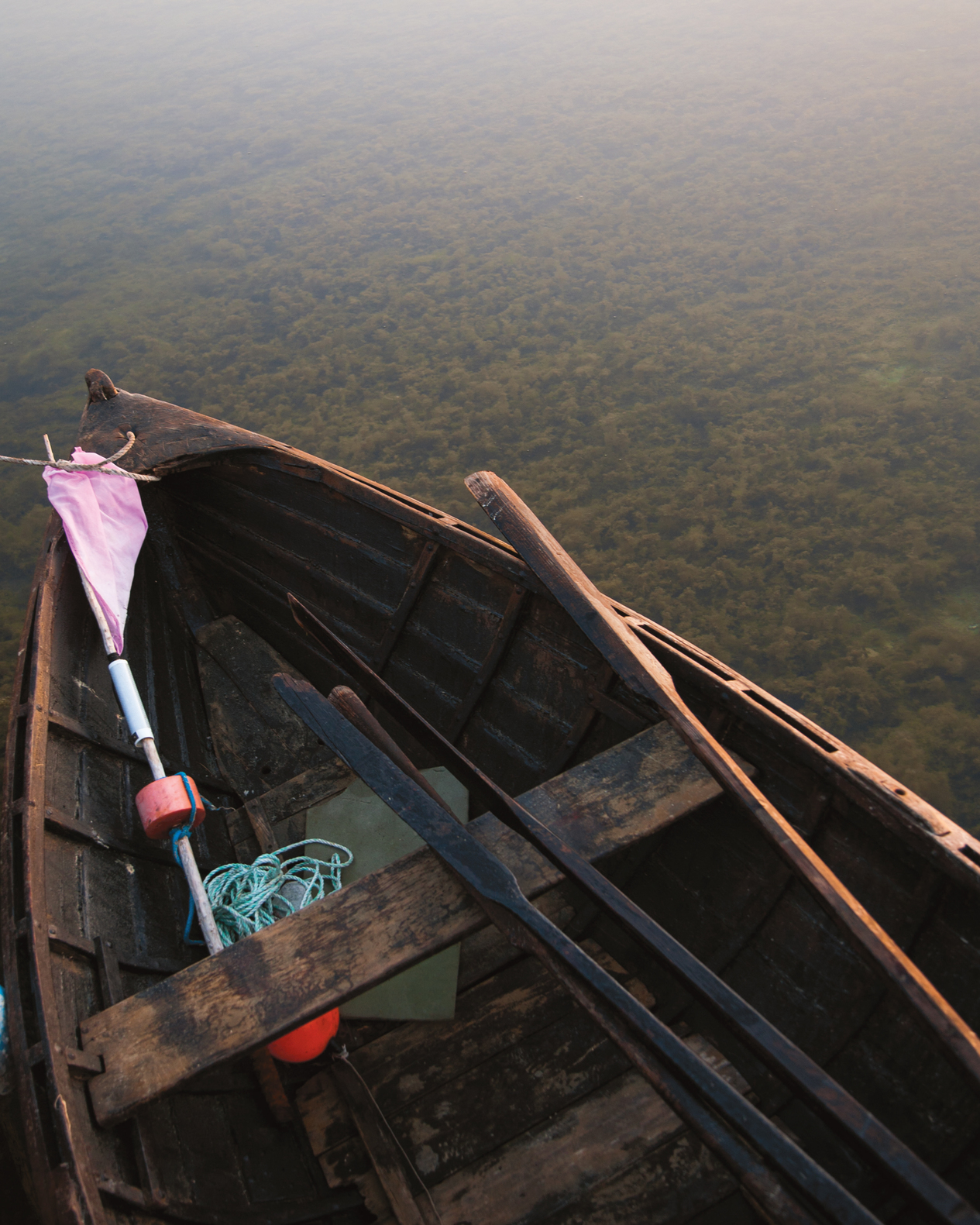SCANDINAVIA IS a region of extremeswhere effortlessly chic design meets rugged wilderness, and perpetual winter nights are followed by endless days of summerand Fire and Ice proves that Scandinavian cuisine is no exception. Founding editor of Gastronomica and the Wests leading culinary authority on the cuisines of the European North, Darra Goldstein explores the rich cultural history and culinary traditions of Denmark, Finland, Norway, and Sweden. From the bold aroma of smoked arctic char, to the delicate flavor of saffron buns, and from the earthy taste of chanterelle soup to the fragrant aroma of raspberry-rose petal jam, this beautifully curated cookbook features over 100 inspiring and achievable recipes that introduce home cooks to the glorious and diverse flavors of Nordic cooking.
introduction
A t the waters edge in an old warehouse district of Copenhagen, I stand muffled in graynot fifty shades, but a decent handful. The sky is leaden, with clouds the color of slate. Oil slicks spread across zinc-colored water, silvery puddles mottle concrete. Granite stones are dark with soot. The steel hulk of an unfinished bridge rises up over the canal. Its November, and theres no sign of the Little Mermaid, or of Tivolis pleasure gardens. Pelting rain evades my umbrella. I try to shake the gloom by imagining this dock a few hundred years ago, when the Danish East India Company sent ships out to sea loaded with barrels of precious salt herring, or awaited their return with coveted spicesginger and cinnamon, allspice, cardamom, and cloves. First making their way into gingersnaps and mulled wine, these flavors soon claimed a place in the Nordic kitchen.
On this rainy day theres little movement anywhere. As I gaze out toward the sea, once a lifeline to the world, it seems fitting that Copenhagen is again rocking the world, now with a modern-day export. For its here, on this dock, in a restored eighteenth-century warehouse, that the restaurant Noma introduced New Nordic cuisine to the world, making Copenhagen a culinary powerhouse. I approach the warehouse the way I imagine princesses once approached magical kingdoms, with a frisson that could be awe or trepidation. Maybe its both. A reservation at Noma is the holy grail of foodie pilgrimage. What if I dont like what I find?
Natures gray palette slips inside the old building with me, except here its transformed from chill into warmth, the hard surfaces of stone offset by softly glowing wood and fur throws aligned over the backs of chairs. Everything is uncluttered and understated, following the principles of modern Scandinavian designan honest use of natural materials like wood, leather, stone, fur, and linen, an approach that privileges function even as it yields gorgeous form. The early twentieth-century ideology of everyday goods of greater beauty spills over into Nomas kitchen and finds its apotheosis on the restaurants menu, where the food of survival is recast as stunning, innovative dishes that emphasize the wild taste of the North. If the flavors of local food are fresh and often subtle, New Nordics are concentrated, with strong elements of mineral and brine. Its all about identity of place expressed in nature and transmuted onto the plate. Trees in temperate climes may bear luscious fruits, but the underappreciated gifts of the North are also beautiful: the aromatic sap, shoots, needles, and bark of birches and pines; the blue-black aronia berries; the sea buckthorn berries like edible gold. Nordic taste is anything but bland.
New Nordic is in many ways old, informed by the traditions of people who have learned how to live under severe conditions. Sami reindeer herders gathered protein-rich lichen and dried it long before it appeared as deep-fried reindeer lichen with mushroom powder on Nomas menu, where it sits evocatively on a bed of green moss garnished with a stone and a twig, enhanced with a dollop of birch-infused crme frache. Just about everyone picks black currants, elderflowers, and rose petals in season, though before Noma no one thought to put them together in a single tour de force bite called blackcurrant berry and rosesblack currant fruit leather shaped into balls and filled with cultured cream, then garnished with pickled rose petals, elderflower blossoms, and pollen. The purest flavors are the freshest, and Nordic foodways have alwaysnecessarilycelebrated both the seasonal and the organic. Summer meadows, forests, and bogs spill over with berries, including prized cloudberries and arctic bramble. Spring offers up pine shoots and tiny birch leaves, fall brings mushrooms and game. Year-round the rivers, lakes, and sea provide herring and mackerel, vendace and salmon, all high in healthy omega-3 fats. The Scandinavians have long recognized these foods as rich sources of vitamins, as are the whole grains of their hearty porridges and breads and the root vegetables on their winter tables. And yet, although berries are rich in antioxidants and spruce shoots burst with vitamin C, its not micronutrients that the Scandinavians seek. They crave the vitalizing tastes, the earthy potency that these foods provide, whether they have been foraged, cultivated, or caught.



